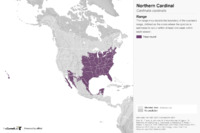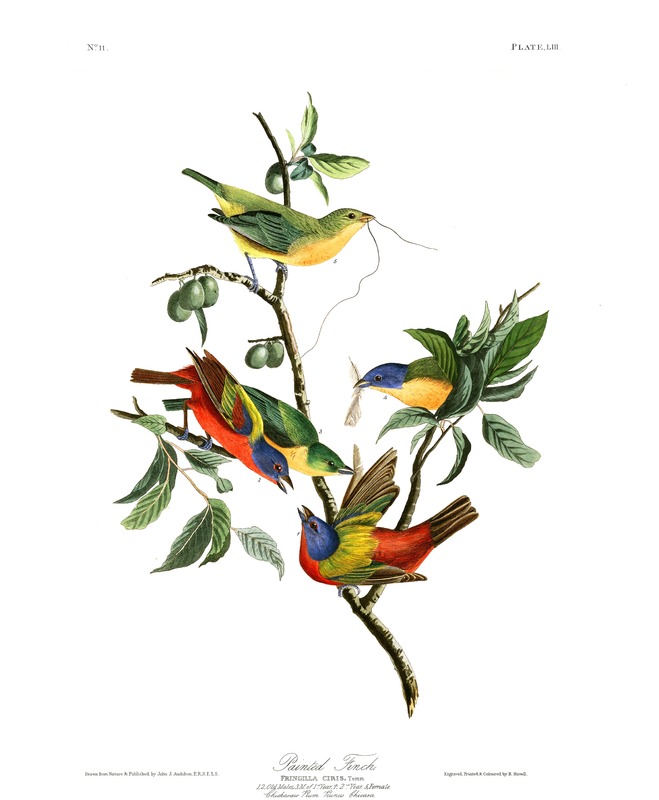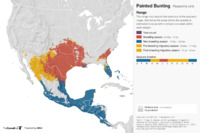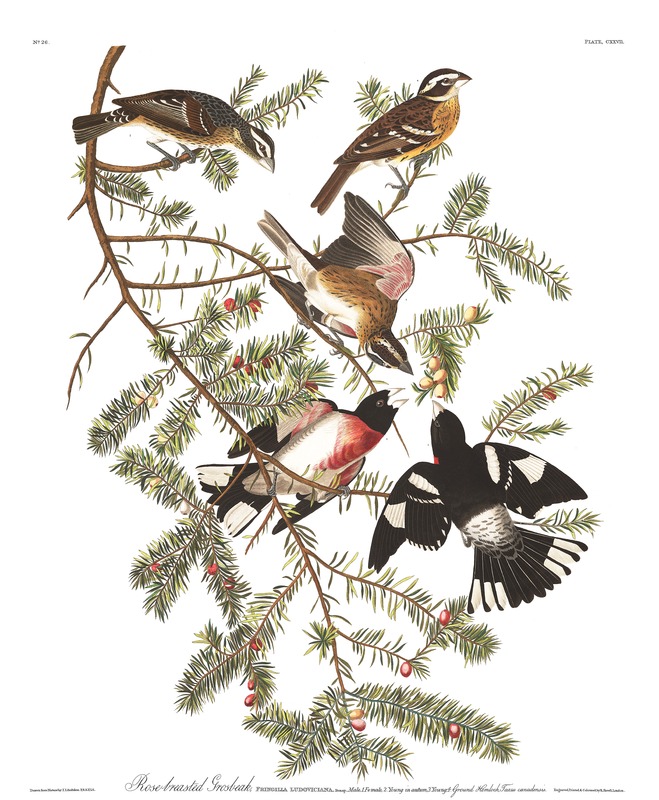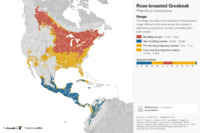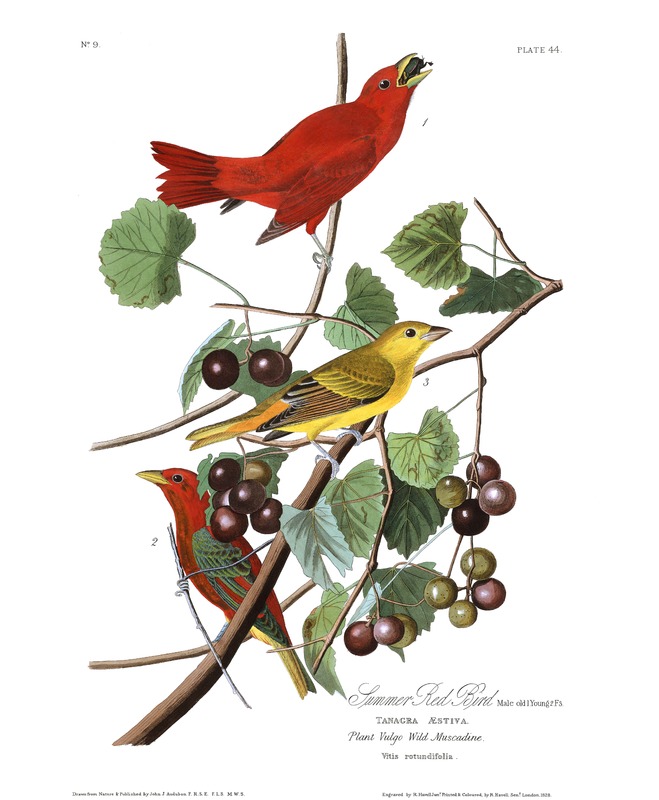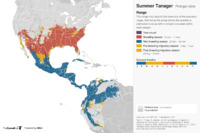Cardinals, Grosbeaks, and Buntings
Birds in the Cardinalidae family are characterized by their cone-shaped bills that are used for cracking open seeds. They are medium-sized and usually live in open areas or near woodlands. They are only found in North and South America and tend to have significant sexual dimorphism (males are brighter than females).
Included below are the Northern Cardinal, the Painted Bunting, the Rose-breasted Grosbeak, and the Summer Tanager.
Northern Cardinal
Cardinalis cardinalis
Habitat: Woodland edges, thickets, suburban gardens, towns, desert washes.
Preferred Food: Mostly seeds, insects, berries. Diet is quite varied.
Fun Fact: Like flamingos, cardinals get their red plumage from their diet.
Painted Bunting
Passerina ciris
Habitat: Woodland edges, roadsides, brush, towns, gardens.
Preferred Food: Mostly seeds and insects.
Fun Fact: Male painted buntings don’t develop their bright colors until their second year of life. Prior to that, they are the same green color as females.
Rose-breasted Grosbeak
Pheucticus ludovicianus
Habitat: Deciduous woods, orchards, groves.
Preferred Food: Mostly insects, seeds, and berries.
Fun Fact: Female rose-breasted grosbeaks are nearly identical to female black-headed grosbeaks, and the two species are able to interbreed.
Summer Tanager
Piranga rubra
Habitat: Woods, groves (especially oaks). In the Southeast, breeds in dry open woods, especially those of oak, hickory, or pine. In the Southwest, breeds in cottonwood-willow forests along streams.
Preferred Food: Mostly insects, some berries. Diet in summer is mainly insects; feeds on berries and small fruits at times.
Fun Fact: Summer Tanagers kill bees and wasps by beating them against branches and then rubbing them on the branch to remove the stinger.

